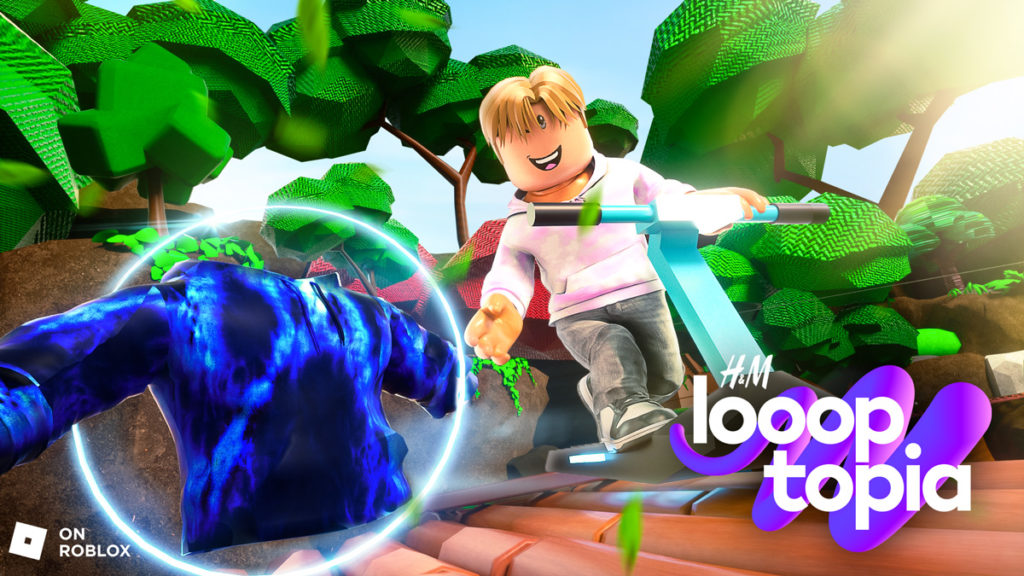H&M’s Roblox Experience Is an Experiment in Virtual Fashion
.article-native-ad { border-bottom: 1px solid #ddd; margin: 0 45px; padding-bottom: 20px; margin-bottom: 20px; } .article-native-ad svg { color: #ddd; font-size: 34px; margin-top: 10px; } .article-native-ad p { line-height:1.5; padding:0!important; padding-left: 10px!important; } .article-native-ad strong { font-weight:500; color:rgb(46,179,178); }
On Jan 25, join experts at Adweek Outlook 2023, a live virtual event, for trend forecasting, tips and tools. Register Now.
In late 2022, H&M debuted “Metaverse Design Story,” a real-world clothing collection inspired by Web3. Think neon yellow dresses, futuristic jewelry and beaded bomber jackets.
The futuristic mannequins in the brand’s Times Square storefront in New York stood as a testament to Web3’s on impact on physical fashion, which is ushering in design technology that can make dresses glisten like water or change texture in response to temperatures.
However, the opposite is also true, and brands such as Nike, Gucci and others are rushing to design virtual garments for the digital realm. Morgan Stanley has predicted the digital fashion industry will be worth $50 billion by 2030.
Sometimes these items are sold alongside a physical counterpart while others stand on their own. In either instance, their very existence is becoming a differentiator for brands looking to appeal to Gen Z consumers, who are increasingly looking for ways to express their identity and individuality online.
Jumping onto this meta trend, H&M is also wading deeper into Web3 with its own immersive brand experience on gaming platform Roblox. The play is part of an experiment that combines digital clothing with the Swedish retailer’s growing focus on sustainability.

Launched Jan. 3, H&M’s “Looptopia” is a digital realm where people can jump between different worlds, play mini-games, attend runway shows and gather materials to create clothing items for their individual avatars. In partnership with metaverse studio Dubit, the experience also lets players trade their digital garments with friends or recycle them.
The virtual city brings together circularity and social interaction across three different alternate worlds: Rainbooow Fields, Neon Studiooo and Fabric Fooorest.
“At H&M, we are constantly looking for new ways to reach our customers, and with so many of them showing up in the metaverse, it made sense for us to join them there in a new, playful and engaging way,” Linda Li, head of customer activation and marketing for H&M Americas, told Adweek.
Virtual self-expression
The game will be updated regularly, with the potential for new worlds to be added in line with brand objectives.
“Now that we’ve launched, we are eager to gather customer feedback, giving us valuable insight into how we can best continue to combine both the physical and digital worlds of fashion and self-expression,” Li added.
She said in the coming years, H&M will continue to explore this “fast-growing expanse” of virtual and augmented realities.
H&M isn’t the only fashion brand to play around with Roblox. It joins Gap, Nike and Ralph Lauren in investing in the platform, which is used by around 58 million people daily.
“Looptopia” comes as these brands are starting to explore the business potential for virtual fashion. Meanwhile, labels that don’t sell physical clothes, only virtual, are on the rise too from The Fabricant to Dematerialised.

The commercial opportunity is ripe. A recent study from Vice’s agency Virtue found 65% of people are prepared to pay the same or more for a virtual fashion item versus its physical equivalent and, on average, respondents expect nearly half (46%) of their overall wardrobe to be digital by 2027. This doesn’t just apply to Gen Zers either—the sample included an equal mix of millennials and Gen Xers too.
Andrew Douthwaite, chief commercial officer of Dubit, said H&M wanted to offer an experience that promotes fun and sustainability, staying consistent with its brand DNA of “style, creativity and culture.”
“It’s been amazing to see the concept evolve from the initial design and workshop through to this iconic launch,” he said.
In recent years, H&M Group—which owns its namesake brand as well as others like COS, Monki, & Other Stories and Weekday—has been focused on dialing up its sustainability efforts with circular economy initiatives including in-store drop-off points where old clothes can be recycled. However, the brand has been hit with a number of greenwashing lawsuits, the most recent of which claims that its “Conscious Choice” range is misleading consumers.
https://www.adweek.com/brand-marketing/hms-roblox-experience-is-an-experiment-in-virtual-fashion/
